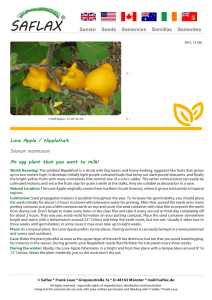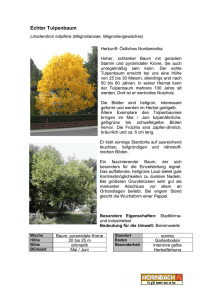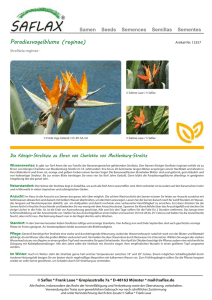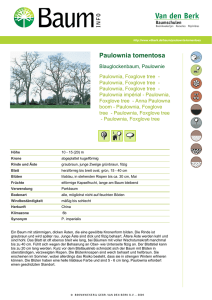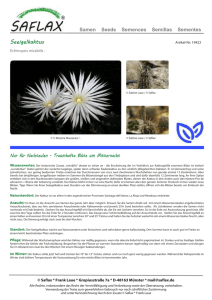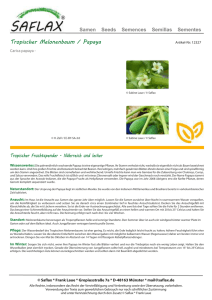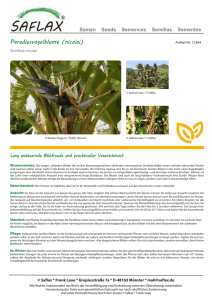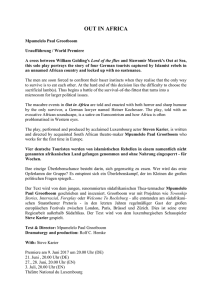Samen Seeds Semences Semillas Sementes
Werbung
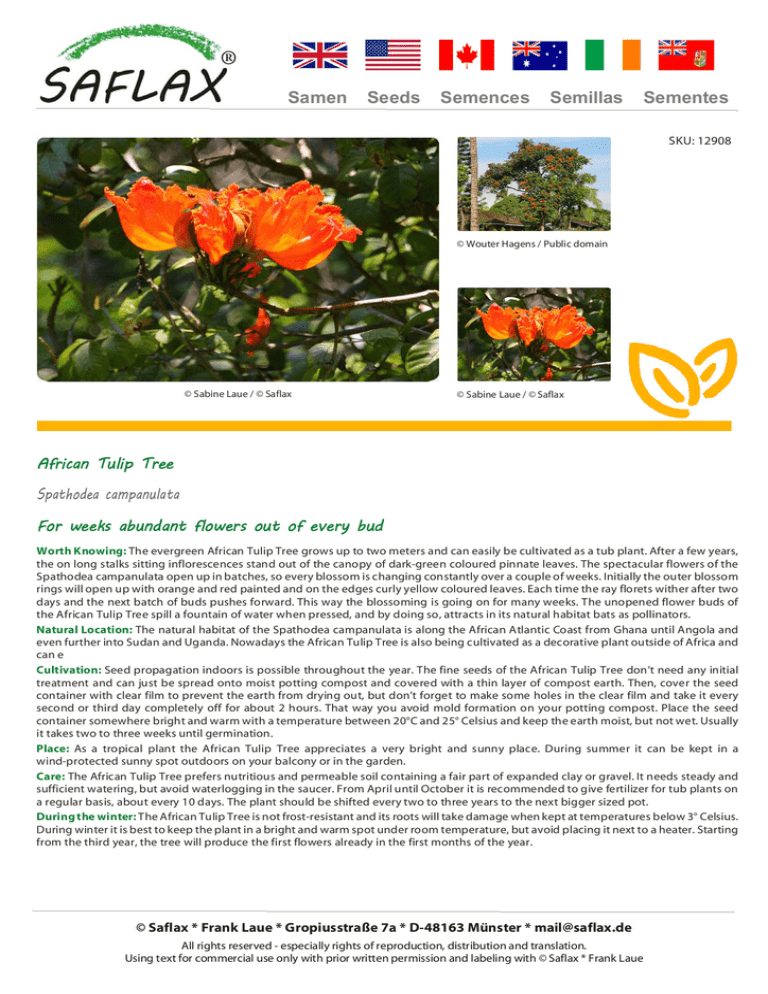
® Samen Seeds Semences Semillas Sementes SKU: 12908 © Wouter Hagens / Public domain © Sabine Laue / © Saflax © Sabine Laue / © Saflax African Tulip Tree Spathodea campanulata For weeks abundant flowers out of every bud Worth Knowing: The evergreen African Tulip Tree grows up to two meters and can easily be cultivated as a tub plant. After a few years, the on long stalks sitting inflorescences stand out of the canopy of dark-green coloured pinnate leaves. The spectacular flowers of the Spathodea campanulata open up in batches, so every blossom is changing constantly over a couple of weeks. Initially the outer blossom rings will open up with orange and red painted and on the edges curly yellow coloured leaves. Each time the ray florets wither after two days and the next batch of buds pushes forward. This way the blossoming is going on for many weeks. The unopened flower buds of the African Tulip Tree spill a fountain of water when pressed, and by doing so, attracts in its natural habitat bats as pollinators. Natural Location: The natural habitat of the Spathodea campanulata is along the African Atlantic Coast from Ghana until Angola and even further into Sudan and Uganda. Nowadays the African Tulip Tree is also being cultivated as a decorative plant outside of Africa and can e Cultivation: Seed propagation indoors is possible throughout the year. The fine seeds of the African Tulip Tree don’t need any initial treatment and can just be spread onto moist potting compost and covered with a thin layer of compost earth. Then, cover the seed container with clear film to prevent the earth from drying out, but don’t forget to make some holes in the clear film and take it every second or third day completely off for about 2 hours. That way you avoid mold formation on your potting compost. Place the seed container somewhere bright and warm with a temperature between 20°C and 25° Celsius and keep the earth moist, but not wet. Usually it takes two to three weeks until germination. Place: As a tropical plant the African Tulip Tree appreciates a very bright and sunny place. During summer it can be kept in a wind-protected sunny spot outdoors on your balcony or in the garden. Care: The African Tulip Tree prefers nutritious and permeable soil containing a fair part of expanded clay or gravel. It needs steady and sufficient watering, but avoid waterlogging in the saucer. From April until October it is recommended to give fertilizer for tub plants on a regular basis, about every 10 days. The plant should be shifted every two to three years to the next bigger sized pot. During the winter: The African Tulip Tree is not frost-resistant and its roots will take damage when kept at temperatures below 3° Celsius. During winter it is best to keep the plant in a bright and warm spot under room temperature, but avoid placing it next to a heater. Starting from the third year, the tree will produce the first flowers already in the first months of the year. © Saflax * Frank Laue * Gropiusstraße 7a * D-48163 Münster * [email protected] All rights reserved - especially rights of reproduction, distribution and translation. Using text for commercial use only with prior written permission and labeling with © Saflax * Frank Laue ® Samen Seeds Semences Semillas Sementes Artikel-Nr: 12908 © Wouter Hagens / Public domain © Sabine Laue / © Saflax © Sabine Laue / © Saflax Afrikanischer Tulpenbaum Spathodea campanulata Über Wochen immer neue Blüten aus jeder Knospe Wissenswertes: Der immergrüne Afrikanische Tulpenbaum lässt sich gut als Kübelpflanze mit einer Höhe von bis zu zwei Metern ziehen und halten. Aus seinem Blätterdach aus dunkelgrünen Fiederblättern ragen nach einigen Jahren an langen Stielen die Blütenstände hervor. Die spektakulären Blüten des Spathodea campanulata öffnen sich in Schüben, so dass sich jede Blüte über Wochen immer wieder verändert. Zunächst öffnet sich der äußerste Blütenkreis und zeigt seine orange- bis rotfarbenen und an den Rändern gewellten und gelbfarbenen Blätter. Nach jeweils zwei Tagen welken die Randblüten und die nächste Knospenreihe schiebt nach. So hält die Blüte über Wochen an. Die ungeöffneten Blütenknospen des Afrikanischen Tulpenbaums geben bei Druck einen Wasserstrahl ab, Damit lockt die Pflanze in ihrer Heimat Fledermäuse an, um sie zu bestäuben. Naturstandort: Das natürliche Verbreitungsgebiet der Spathodea campanulata liegt an der afrikanischen Atlantikküste von Ghana bis Angola und von dort bis Sudan und Uganda. Mittlerweile ist sie aber auch außerhalb Afrikas eine beliebte Zierpflanze und hat sich bis nach S Anzucht: Im Haus ist die Anzucht aus Samen das ganze Jahr über möglich. Die leichten Samen benötigen keine Vorbehandlung und können direkt auf feuchte Anzuchterde verteilt und nur leicht mit dem Anzuchtsubstrat bedeckt werden. Spannen Sie Klarsichtfolie über das Anzuchtgefäß und stechen Sie einige Löcher in die Folie. So ist die Erde vor Austrocknung geschützt. Alle zwei bis drei Tage sollten Sie die Folie für 2 Stunden entfernen. Das beugt einer Schimmelbildung auf der Anzuchterde vor. Stellen Sie das Anzuchtgefäß an einen hellen und warmen Ort mit 20 bis 25° Celsius und halten Sie die Anzuchterde feucht, aber nicht nass. Die Keimung erfolgt in der Regel nach zwei bis drei Wochen. Standort: Als wärmebedüftiges Tropenkind schätzt der Afrikanische Tulpenbaum einen lichtreichen und sonnigen Platz. Im Sommer ist ein windgeschützter Sonnenplatz natürlich auch auf dem Balkon oder im Garten möglich. Pflege: Der Tulpenbaum liebt nährstoffreiche und durchlässige Erde mit grobkörnigen Anteilen wie Blähton oder Kies. Er braucht eine konstante Wasserversorgung, wobei Staunässe durch Restwasser im Untersetzer vermieden werden sollte. Von April bis Oktober empfiehlt sich eine regelmäßige Düngung mit Kübelpflanzendünger im Abstand von 10 Tagen. Topfen Sie die Pflanze alle ein bis zwei Jahre um, aber wählen Sie dabei immer nur den nächstgrößeren Topf. Im Winter: Ihr Tulpenbaum ist nicht frostfest und bei Temperaturen unter 3° Celsius kann es zu Wurzelschädigungen kommen. Besser ist ein heller und warmer Standort mit normaler Raumtemperatur, da ab dem dritten Jahr in den ersten Monaten des Jahres bereits mit Blüten zu rechnen ist. Vermeiden Sie aber einen Standort in Heizungsnähe. © Saflax * Frank Laue * Gropiusstraße 7a * D-48163 Münster * [email protected] Alle Rechte, insbesondere das Recht der Vervielfältigung und Verbreitung sowie der Übersetzung, vorbehalten. Verwendung der Texte zum gewerblichen Gebrauch nur nach schriftlicher Zustimmung und unter Kennzeichnung durch den Zusatz © Saflax * Frank Laue
